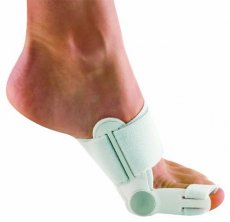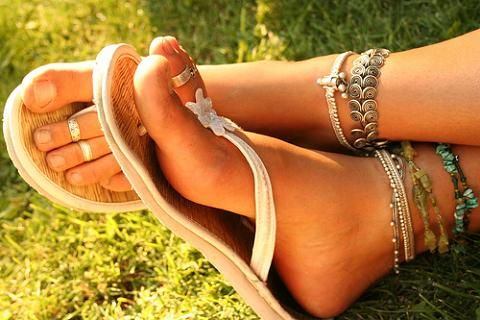Medical expert of the article
New publications
Useful facts about the structure of the foot
Last reviewed: 04.07.2025

All iLive content is medically reviewed or fact checked to ensure as much factual accuracy as possible.
We have strict sourcing guidelines and only link to reputable media sites, academic research institutions and, whenever possible, medically peer reviewed studies. Note that the numbers in parentheses ([1], [2], etc.) are clickable links to these studies.
If you feel that any of our content is inaccurate, out-of-date, or otherwise questionable, please select it and press Ctrl + Enter.

In order to have healthy feet, it is very important to know their structure. There are many interesting facts about the structure of the foot that will help you to take the right attitude towards your health and avoid many diseases, as well as overloading your feet.

Nerves located in the feet
Nerve endings located in the feet enable muscles to transmit signals to different parts of the brain. Thanks to the nerves, pain impulses are also transmitted, which is why a person feels pain in the feet.
There are 4 nerves in the foot that play leading roles. They are located in the area of the fibula, near the tibia and deep near it, and also near the calf.
When the nerves in the foot become inflamed and deformed, the foot hurts a lot. The causes of nerve irritation are pressure from uncomfortable shoes, awkward posture, pressure on the feet from constant walking, standing or sitting at work in an incorrect posture.
Nerves can be irritated and compressed by socks that are too tight, stockings made of elastic fabric and synthetic materials. Swelling occurs on the legs, the nerves are irritated even more and the foot hurts a lot.
To protect the nerves in your feet from inflammation, you need to wear comfortable shoes, socks made of natural fabric, comfortable stockings that fit, and avoid standing or sitting for long periods of time.
Tendons of the foot
Tendons play a very important role – they serve as attachments of muscles to bones. The tendons of the foot look like light-colored fibers that are strong as a fishing line and very flexible. Because of this property, they can stretch when a leg muscle is stretched. But you need to be very careful with this property of the fibers: when a tendon is stretched too much, it is very painful.
Then the body may respond with inflammation of the tendon.
Ligaments of the foot
Ligaments are much thicker than tendons, but they are not as elastic, they do not stretch as well. But they are flexible. Ligaments serve to support the joint in a certain position, give it strength and support. Ligaments connect bones to each other with the help of joints.
If your leg is injured, such as by trauma, impact, awkward position, the ligament can be stretched or torn, and this is very painful.
So, the difference between ligaments and joints is that ligaments connect only bones, while tendons connect bones and muscles. Ligaments are thicker, while tendons are thinner.
More facts about ligaments and tendons
Both the ligaments and tendons of the leg consist of collagen fibers, which are quite flexible and strong. The state of the collagen determines how flexible and elastic the tissues containing this collagen will be. If the collagen fibers are damaged, then the muscles, ligaments, and tendons will not be elastic, but will be weak, flaccid, and the person's legs will not serve him well.
Ligaments and tendons can be stronger (if you train and toughen up) and weaker (if you lead a sedentary lifestyle or are already older). If the ligaments and tendons are thin, they may not be as strong as those that are thicker.
 [ 1 ]
[ 1 ]
What types of tendons are there?
There are several types, each with its own name. For example, the Achilles tendon is the largest. It controls the movement of the foot when you walk, run, or generally move your legs.
It is attached from the heel bone to the triceps muscle in the calf area. This tendon is like a rope when a person wants to rise on tiptoe. Then the triceps muscle contracts, and the traction force moves the tendon toward the foot. The person rises on tiptoe.
The tendons of the muscles are attached to the bones of the phalanges, and when you bend or straighten your toes, it is done by means of the tendons. They connect the bones of the phalanges and the bones of the sole. Another tendon serves to bend and straighten the foot. It is called the tendon of the tibialis anterior.
There are tendons that serve to turn the foot inward and outward. They are the connectors of two bones - the long peroneus muscle and the short peroneus.
Cartilage in foot biomechanics
Cartilage is a dense tissue that has the property of covering the head of the bone at the location of the joint. Cartilage looks like a white part of the bone on its head.
Cartilage allows the foot and other parts of the body to move smoothly because when bones rub against each other, cartilage provides a gliding effect. It protects bones from inflammation when bones rub against each other because it acts as a partition between them.
Joint capsules
The bones of the foot are connected by ligaments, some of which help the joint capsules to be stronger, to be fixed in a certain position. The joint capsule is a small, hermetically sealed sac. Inside this sac is a liquid that moistens the joint cartilage to reduce friction between them. This liquid is called synovial.
Structure of the joints of the foot
Joints are a group of bones that connect to each other. When a joint is dislocated, it is a very painful phenomenon. You cannot do without medical help. Joints serve to enable a person to move in any direction, any part of his body where there are bones, including the legs.
Ankle
The ankle is one of the most important and largest joints of the leg. It connects the foot and the lower leg. When the ankle is deformed or injured, a person experiences severe pain and is unable to walk. When the ankle of one leg is damaged, a person cannot step on it, and the weight is transferred to the healthy foot. The person begins to limp.
But it is better not to walk in this position at all, leave the leg in a calm position to reduce the load on the ankle. And get medical help from a traumatologist. Otherwise, the mechanical movements of both legs will be incorrect and will pose a threat to the entire body.
Subtalar joint
This joint extends from the heel joint to the talus bone of the leg and serves to allow the foot to turn inward and outward. These movements are called pronation. If pronation is impaired, the foot is subject to additional stress, which can lead to imbalance and dislocation.
The cuneonavicular and subtalar joints
These joints are very closely connected to each other. They can replace each other in work, in other words - compensate for each other's movements. These joints serve to enable a person to perform complex movements with their legs. For example, during a complex dance or fight, or when walking on a rope.
When joints often replace each other, they wear out and foot deformation occurs. Therefore, it is very important to give joints a rest and, during intense physical activity, give your feet a break.
Metatarsophalangeal joints
There are five of these joints on each finger. They connect the heads of the bones to the phalanges of the toes. These joints experience a very large load because they bear the weight of the entire body. Therefore, they are very vulnerable, especially to infections and various diseases such as arthritis, radiculitis, polyarthritis, gout.
Bones in the foot
The foot is amazing because it contains ¼ of the bones that are found in all parts of the body. There are no more and no less than 28 of them. Of these 26 bones, the two largest are medial and lateral. Rarely, but it happens that a person has several more small additional bones, in addition to the main 28. They are called accessory bones. They rarely cause any deformations, so they are safe.
Joints, bones, cartilage, ligaments, tendons, nerves are parts of the foot, the location and features of which need to be known. Then a person controls his movements and can avoid unnecessary injuries and diseases.

